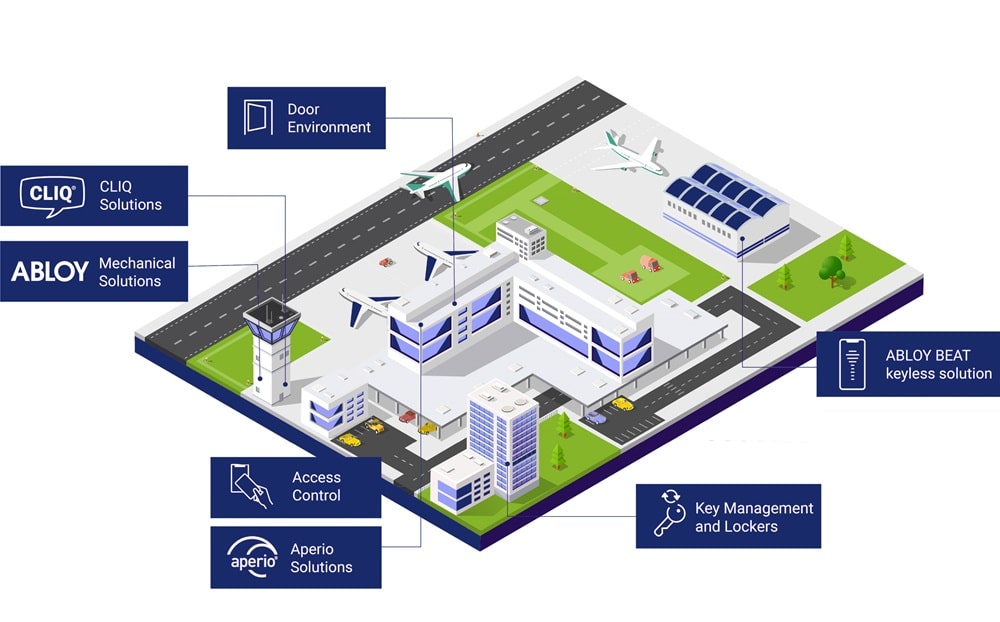Amidst recent news reports of power outages at a UK airport, Abloy UK is highlighting the need for effective access control solutions that maintain security even when the power supply is disrupted.
Steve Wintle, Head of Critical Infrastructure at Abloy UK, explains: “We cannot stress enough the importance of building in security and safety resilience within national infrastructure, particularly when it comes to areas such as access control.
“Even in cases where emergency back-up energy supplies are available via generators, the resultant power surges can cause not only chaos in the short term, but also long-term damage too.
“When power is restored, singular or multiple surges can cause damage to the physical infrastructure, which can then require extensive repair by engineers to become operational again.
“However, there are solutions that remain operational even during these types of incidents. By combining the PROTEC2 CLIQ system and electric locks from Abloy UK, airport security and facilities managers can build resilience into transport hub operations – even in the event of a power cut.”
Door magnets, which require a continual power supply, are often used in airport environments as part of the access control solution due to their simplicity of installation, but a power surge can render them useless and leave areas unsecure.
There are also fire risks associated with installing a magnet on a door which is used as a fire escape, as they require special arrangements to guarantee they are always fail-safe in the event of an emergency.
For example, some door magnets require an alarm or ‘request to exit’ mechanism to allow someone to exit, so there could be life-threatening delays for people needing swift egress in an emergency.
According to Abloy UK, there are also a number of building regulation standards in place that relate to access control. It’s essential that these are adhered to, in order to ensure safety and security. These include BS179 Emergency Escape (for when the building occupants are aware of the building environment), BS1125 Panic Escape (for environments used by the general public) and the new standard BS13637 Electronically Controlled Escape Systems (for use on escape routes). These standards state that even if a door is electronically controlled for access there must be a compliant mechanical means of escape in an emergency.
Electric locks therefore maintain security and safety without power, and without having to compromise security. If the PROTEC2 CLIQ solution is also installed as an override then facilities managers and airport security can maintain access control, as it requires no power and no infrastructure.
PROTEC2 CLIQ enables authorised timed access for staff and contractors, and the ability to enable and revoke key authorisation remotely and delete lost keys. This offers substantial time saved and operational efficiencies in key collection between airside and landside. The solution also provides full audit trail reports and can be integrated with permit to work systems, offering 100% control of all keys, 100% of the time.
Wintle adds: “Airports are a vital part of our critical infrastructure, and service resilience is crucial. The recent power outages at a UK airport and the subsequent disruption have highlighted the need for better standards in security and access control provisions.
“With solutions available to mitigate risks and ensure continuation of services, now is the time to invest in effective reliable systems that are both scalable and flexible too.”
For more Abloy UK news, click here






